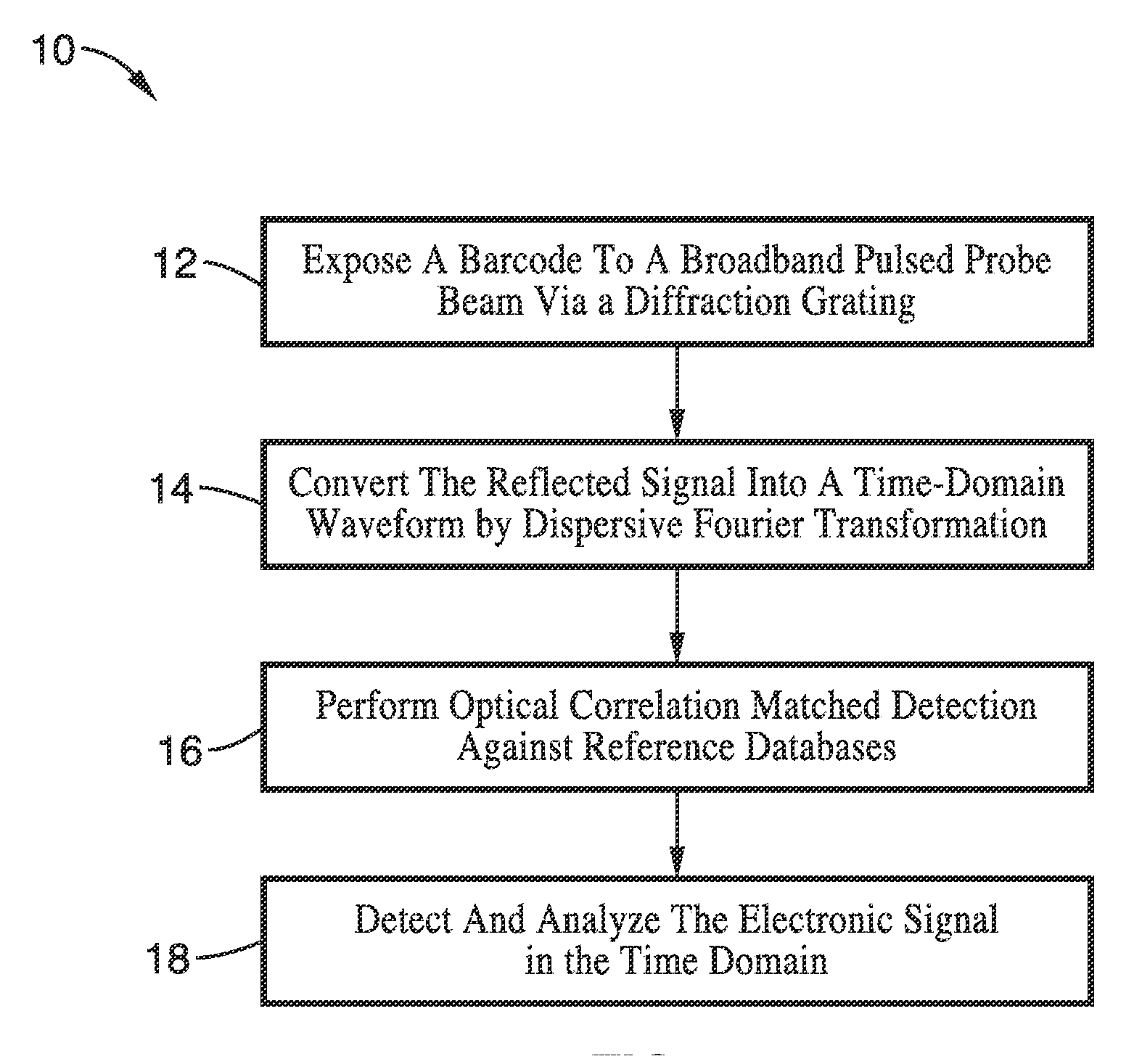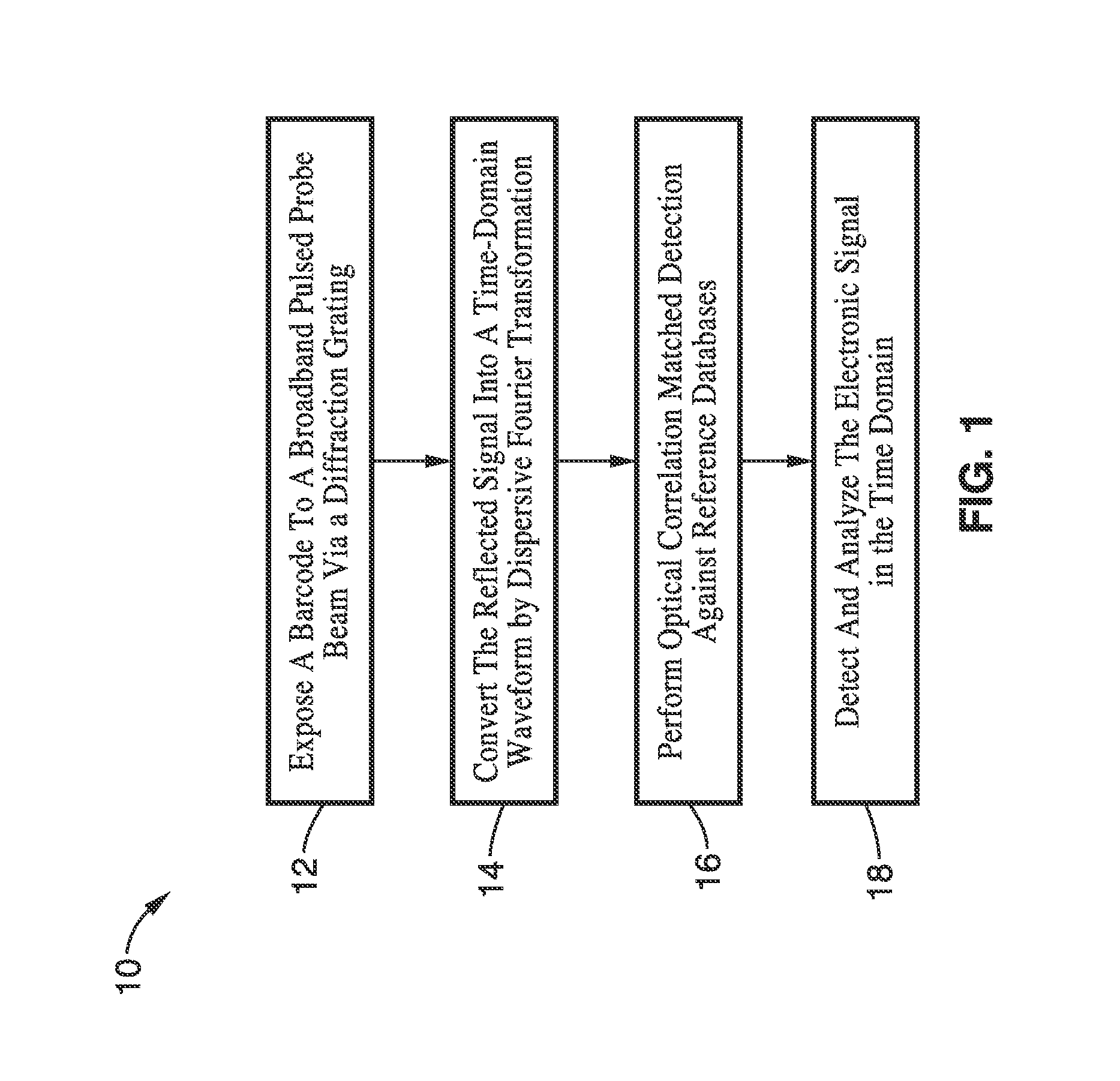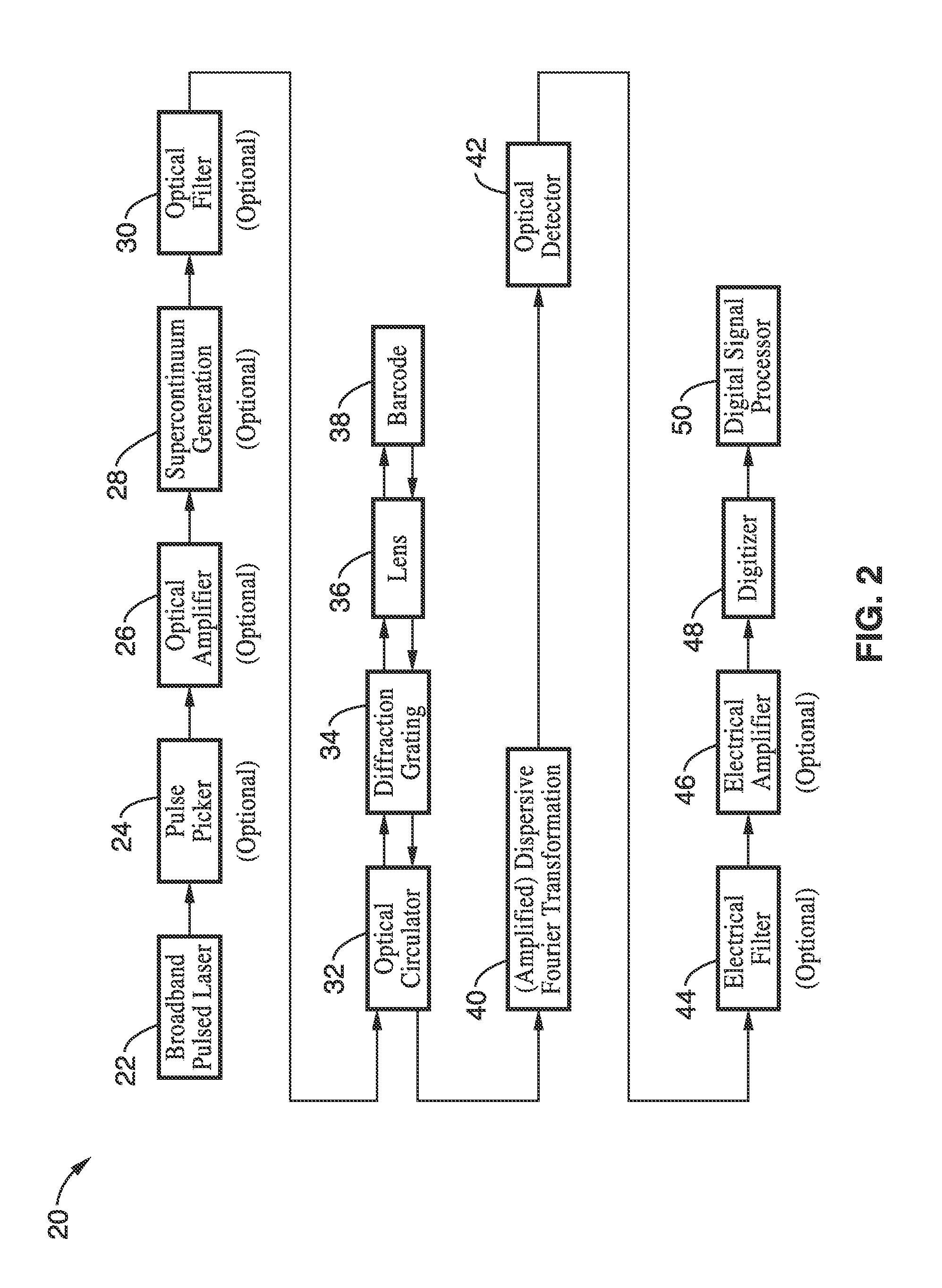Apparatus and method for dispersive fourier-transform imaging
a fourier-transform imaging and apparatus technology, applied in the field of optical imaging, can solve the problems of limiting the number of scans per second, the image frame rate the speed of the fastest barcode reader is limited to a rate of about one thousand scans, so as to improve the strength of the signal, improve the effect of performance and high total dispersion
- Summary
- Abstract
- Description
- Claims
- Application Information
AI Technical Summary
Benefits of technology
Problems solved by technology
Method used
Image
Examples
embodiment 10
[0080]FIG. 1 is a method for dispersive Fourier-transform reflectivity measurement, summarizing the steps necessary for performing one- or two-dimensional barcode reading and optional correlation matched detection against known databases. According to this embodiment, a barcode is exposed to a broadband pulse through a diffraction grating at block 12, with the spatially dispersed spectrum being incident on the barcode. In block 14, the resulting reflected light from the barcode returns to the diffraction grating which reforms a pulse and is converted into a time-domain waveform by dispersive Fourier transformation. Then optional correlation matched detection against a reference database can be optically performed in block 16 upon the spectrally encoded barcode information by modulating it with an optical modulator fed by a pattern generator. The optical signal is detected by a photodetector in block 18 and its electronic signal is analyzed, such as by a digital signal processor, in ...
embodiment 1
[0126]2. An apparatus as recited in embodiment 1, wherein said responsive optical signal is created in response to optical energy which is reflected from the target to said means for dispersive Fourier-transformation, or optical energy that is transmitted through the target to said means for dispersive Fourier-transformation.
[0127]3. An apparatus as recited in embodiment 1, wherein said probe beam and said responsive optical signal are carried through free-air, optical fiber, or through a combination of free-air and optical fiber.
[0128]4. An apparatus as recited in embodiment 1, wherein said means for generating said broadband pulsed probe beam comprises a laser configured to generate pulses.
[0129]5. An apparatus as recited in claim 1, further comprising means for picking selected pulses from a train of pulses generated by said means for generating a broadband pulsed probe beam.
[0130]6. An apparatus as recited in embodiment 1, further comprising means for amplification and / or filter...
PUM
 Login to View More
Login to View More Abstract
Description
Claims
Application Information
 Login to View More
Login to View More - R&D
- Intellectual Property
- Life Sciences
- Materials
- Tech Scout
- Unparalleled Data Quality
- Higher Quality Content
- 60% Fewer Hallucinations
Browse by: Latest US Patents, China's latest patents, Technical Efficacy Thesaurus, Application Domain, Technology Topic, Popular Technical Reports.
© 2025 PatSnap. All rights reserved.Legal|Privacy policy|Modern Slavery Act Transparency Statement|Sitemap|About US| Contact US: help@patsnap.com



